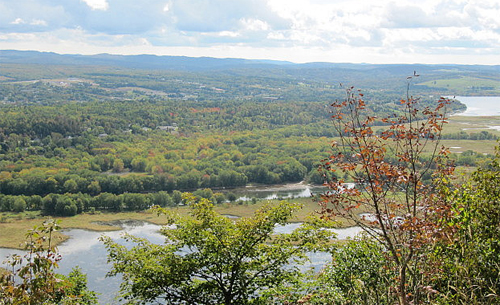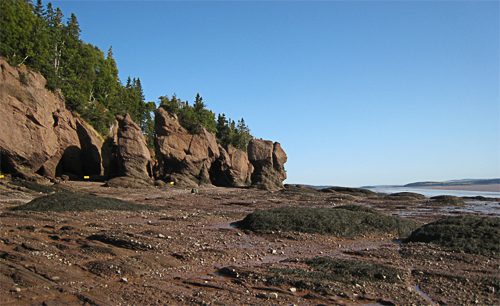The Saint Croix Highlands are rocky and mountainous, as the name suggests. Sparsely forested, this hilly land was unsuitable for farming or livestock pursuits; most of the construction in this area took place in the last century of humanity's reign. Thus, the buildings have begun to fall to ruin faster than those of older construction. Many small suburban towns have been overtaken by wilderness -- shrubs and other small plants force their way through cement and asphalt, and wooden houses come toppling down to earth.
- More on the 'Souls Wiki
Cape Hopewell is home to a variety of unique geological formations. Large boulders dot the shoreline, often found in sea stacks and other odd formations -- sheer drops and raised beaches are the norm. As any other along the Bay of Fundy, this area boasts an extremely varied tide. Hopewell Cape in particular, however, boasts some of the highest average tidal ranges in the world; the high tide can rise as much as 16 metres (52 ft). During low tide, there is plenty of beach and numerous tidal pools; however, during the high tide, the water comes to the cliff's edge.
- More on the 'Souls Wiki
Although Halifax is larger than Saint John, this Atlantic coast city is as impressive, boasting tall buildings and a once-bustling metropolis. Like the Nova Scotian city, Saint John is also situated on a harbor. Many buildings closest to the shoreline are in the worst disrepair; a few have fallen into the harbor entirely. Inland construction is more secure, but all show wear and signs of nature's march forward. Four distinctive neighborhoods form Saint John city: residential, retail, commercial, and working class. In general, Saint John is in worse shape than Halifax, primarily due to the colder and harsher climate of mainland Canada.
- More on the 'Souls Wiki




